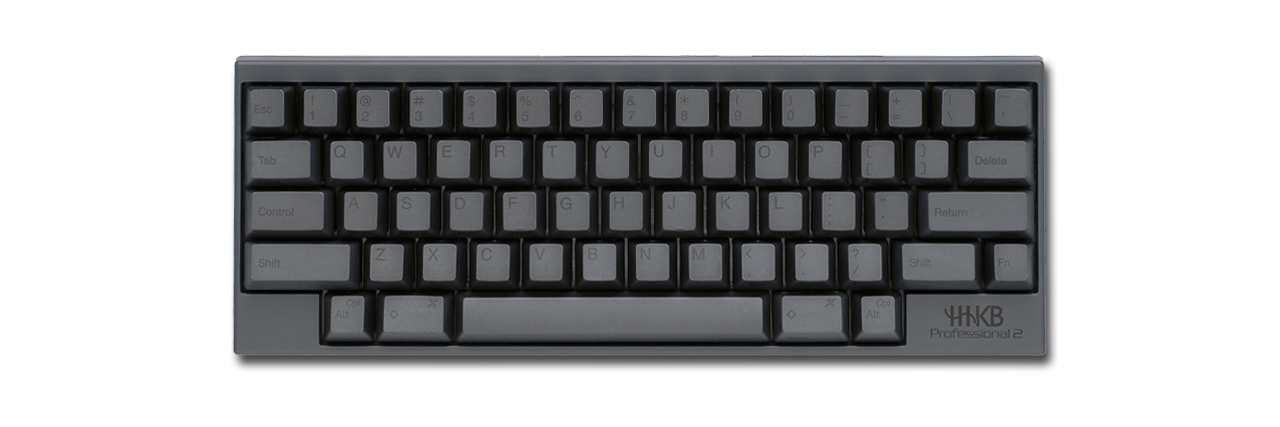
Today, I would like to share the history behind the HHKB layout and why the location of the CTRL key is so important, especially for UNIX users. One significant factor is the superior layout and location of the Control/CTRL key. If that isn’t worth your time, I don’t know what is.Since the late 1990's, the Happy Hacking Keyboard (HHKB) has been the ultimate tool and obsession for programmers, developers, and coders around the world. Yes its layout will take some getting used to, and the fact I'll have to burn through some standard AA batteries to power it is a bit of a pain, but the fact remains that you’re getting arguably the best typing experience money can buy in a keyboard that’s amazingly well built and one that’s unlike anything else on the market today.
#Hhkb layout sizes professional
I’ll be honest, I’m blindly in love with my HHKB Professional Hybrid Type S, and I’ll recommend you go and buy one, even if it’s just simply to try it out. But, let’s face it, if you’re considering buying one of these, you know exactly why you should buy one, and you may not need this review to convince you. It’s $357/£300 at the time of writing-for a keyboard that doesn’t come with all the keys or proper mechanical switches and you don’t get a USB Type-C cable in the box. This leads me nicely onto the big elephant in the room, the price. I’m blindly in love with my HHKB Professional Hybrid Type S. Personally, I think this is a bit of an oversight given the sheer cost for getting the HHKB: a rechargeable cell with USB Type-C charging not only makes more logistical sense, it also means you don’t risk the HHKB suddenly dying without warning. There is also a USB Type-C port for wired use, although it doesn’t charge the HHKB’s batteries-that’s up to you to get some rechargeable cells. In my mileage, I actually didn't have to change batteries during the six or so weeks I had the HHKB in hand, and PFU says you can get up to four months charge on a set of batteries. Returning to normal keyboard things, this is a wireless keyboard, and works via 2 AA batteries that can be changed easily with the protruding battery compartment out of the top of the chassis. The HHKB here also features silenced and dampened Topre switches, so if you’re working in a busy office, or you don’t want to wake the neighbours, it’ll also be an excellent keyboard, too. What’s especially intriguing is that the HHKB doesn’t feature a metal plate inside, lending the bottom out of the keypress to feel smoother and crisper than my RealForce, with its steel plate offering a stiffer bottom out on the key travel, despite using the same switches. The switch feeling here can be pretty polarising die hard mechanical fans will say it doesn’t feel right but to my fingers, it’s one of the best things I’ve ever typed on, apart from my RealForce.

Where normal key switches can feel harsh with a form of tactility, the HHKB feels soft but tactile, without feeling spongy or wet, like some membrane keyboards can feel. The best way I can describe it is this: typing on the HHKB Professional Type S is like typing on a cloud.

#Hhkb layout sizes free
In short, they aren’t mechanical in the traditional sense, but are given a bit of a free pass, given how amazing they feel. I talked about electro-capacitive keyboards with a feature on them about this time last year, but if you’re unaware, these work via a plunger pushing down a membrane, which in turn pushes down a conical spring, creating electrical contact and causing a keystroke to be registered. There’s no need to reach down an extra row for modifier keys, keeping your fingers firmly where they should be.Īpart from the layout, the HHKB also features some intriguing electro-capacitive switches of sorts, which are the same as you get on a Topre RealForce, another one of those holy grail keyboards I alluded to earlier. The single level Enter key directly below backspace means there’s less of a jump for deleting characters, while the same is also true on the left-hand side with the Control key where Caps Lock is. The point here though is that while the HHKB layout takes some getting used to, and it took me a week or so of constant use to do so, the placement of certain keys makes perfect sense. In the same vein, PCs are consumable goods, while keyboards are important interfaces.”
#Hhkb layout sizes Pc
With that philosophy in mind, he compared the keyboard and PC to a horse and saddle in the Wild West, with one of the best analogies I’ve ever read: “The horse was a consumable good, but the saddle was an interface that their bodies had gotten used to. He saw the keyboard as an accessory that PC makers had neglected, when in fact it’s one of the most integral parts.

The story goes that Wada wasn’t happy with having to use a different keyboard layout with differing complexities with every operating system that he had to use, and he wanted to design a one size fits all sort of thing to suit every platform he was using. Cable: USB Type-C, detachable (not included!)


 0 kommentar(er)
0 kommentar(er)
